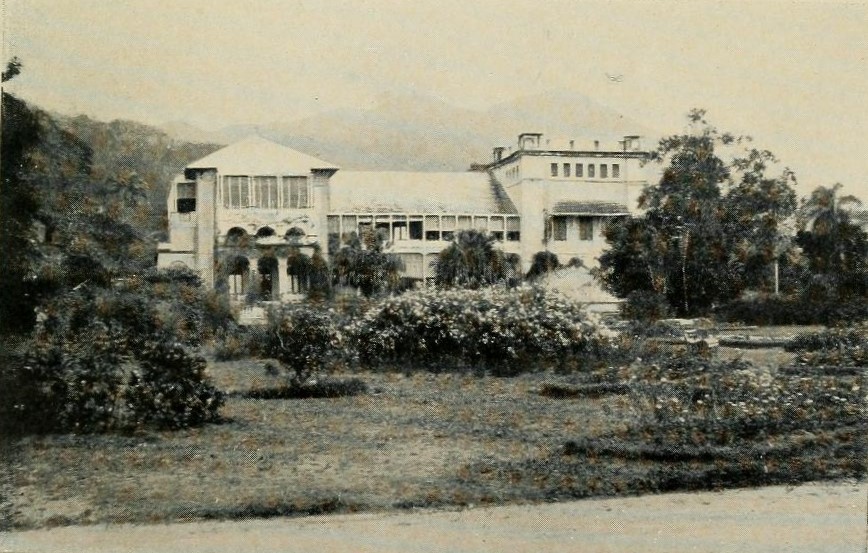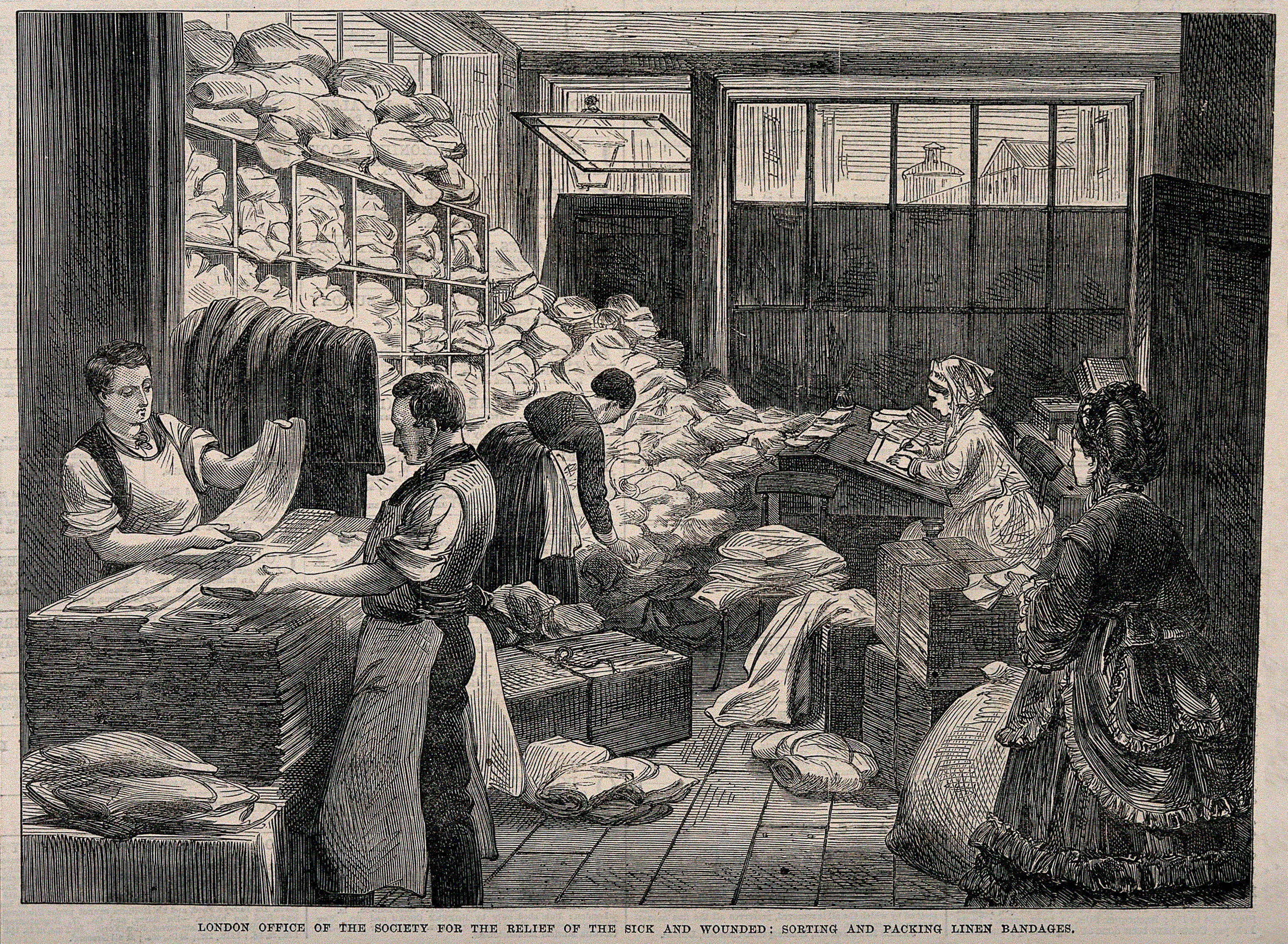|
Trinidad And Tobago Red Cross Society
The Trinidad and Tobago Red Cross Society (TTRCS) was founded on 12 July 1939 as a Branch of the British Red Cross Society. It has its headquarters in Port of Spain, with branches in the North and South of the island of Trinidad and one branch on the island of Tobago. Following the attainment of independence in 1962, the TTRCS became an Independent Society by Act No. 15 of 1963. On 8 August 1963, the TTRCS became part of the International Committee of the Red Cross and the International Federation of Red Cross and Red Crescent Societies. The Constitution of the Trinidad and Tobago Red Cross Society is based on the Geneva Conventions of 1949 and their additional Protocols of 1977 and the Fundamental Principles of the Red Cross Red Crescent Movement which are: :• Humanity :• Impartiality :• Neutrality :• Independence :• Voluntary Service :• Unity :• Universality The TTRCS is made up of several departments with programmes grouped into six core areas: :• Promo ... [...More Info...] [...Related Items...] OR: [Wikipedia] [Google] [Baidu] |
Non-governmental Organization
A non-governmental organization (NGO) or non-governmental organisation (see spelling differences) is an organization that generally is formed independent from government. They are typically nonprofit entities, and many of them are active in humanitarianism or the social sciences; they can also include clubs and associations that provide services to their members and others. Surveys indicate that NGOs have a high degree of public trust, which can make them a useful proxy for the concerns of society and stakeholders. However, NGOs can also be lobby groups for corporations, such as the World Economic Forum. NGOs are distinguished from international and intergovernmental organizations (''IOs'') in that the latter are more directly involved with sovereign states and their governments. The term as it is used today was first introduced in Article 71 of the newly-formed United Nations' Charter in 1945. While there is no fixed or formal definition for what NGOs are, they are genera ... [...More Info...] [...Related Items...] OR: [Wikipedia] [Google] [Baidu] |
Port Of Spain
Port of Spain (Spanish: ''Puerto España''), officially the City of Port of Spain (also stylized Port-of-Spain), is the capital of Trinidad and Tobago and the third largest municipality, after Chaguanas and San Fernando. The city has a municipal population of 37,074 (2011 census), an urban population of 81,142 (2011 estimate) and a transient daily population of 250,000. It is located on the Gulf of Paria, on the northwest coast of the island of Trinidad and is part of a larger conurbation stretching from Chaguaramas in the west to Arima in the east with an estimated population of 600,000. The city serves primarily as a retail and administrative centre and it has been the capital of the island since 1757. It is also an important financial services centre for the CaribbeanCIA World Factbook Trinidad an ... [...More Info...] [...Related Items...] OR: [Wikipedia] [Google] [Baidu] |
Signal Hill, Trinidad And Tobago
In signal processing, a signal is a function that conveys information about a phenomenon. Any quantity that can vary over space or time can be used as a signal to share messages between observers. The '' IEEE Transactions on Signal Processing'' includes audio, video, speech, image, sonar, and radar as examples of signal. A signal may also be defined as observable change in a quantity over space or time (a time series), even if it does not carry information. In nature, signals can be actions done by an organism to alert other organisms, ranging from the release of plant chemicals to warn nearby plants of a predator, to sounds or motions made by animals to alert other animals of food. Signaling occurs in all organisms even at cellular levels, with cell signaling. Signaling theory, in evolutionary biology, proposes that a substantial driver for evolution is the ability of animals to communicate with each other by developing ways of signaling. In human engineering, sign ... [...More Info...] [...Related Items...] OR: [Wikipedia] [Google] [Baidu] |
Tobago
Tobago () is an List of islands of Trinidad and Tobago, island and Regions and municipalities of Trinidad and Tobago, ward within the Trinidad and Tobago, Republic of Trinidad and Tobago. It is located northeast of the larger island of Trinidad and about off the northeastern coast of Venezuela. It also lies to the southeast of Grenada. The official bird of Tobago is the cocrico. Etymology Tobago was named ''Belaforme'' by Christopher Columbus "because from a distance it seemed beautiful". The Spanish friar Antonio Vázquez de Espinosa wrote that the Kalina people, Kalina (mainland Caribs) called the island ''Urupina'' because of its resemblance to a big snail, while the Island Caribs, Kalinago (Island Caribs) called it ''Aloubaéra'', supposedly because it resembled the ''alloüebéra'', a giant snake which was supposed to live in a cave on the island of Dominica. The earliest known record of the use of the name ''Tabaco'' to refer to the island is a Spanish royal order is ... [...More Info...] [...Related Items...] OR: [Wikipedia] [Google] [Baidu] |
Trinidad And Tobago
Trinidad and Tobago (, ), officially the Republic of Trinidad and Tobago, is the southernmost island country in the Caribbean. Consisting of the main islands Trinidad and Tobago, and numerous much smaller islands, it is situated south of Grenada and off the coast of northeastern Venezuela. It shares maritime boundaries with Barbados to the northeast, Grenada to the northwest and Venezuela to the south and west. Trinidad and Tobago is generally considered to be part of the West Indies. The island country's capital is Port of Spain, while its largest and most populous city is San Fernando. The island of Trinidad was inhabited for centuries by Indigenous peoples before becoming a colony in the Spanish Empire, following the arrival of Christopher Columbus, in 1498. Spanish governor José María Chacón surrendered the island to a British fleet under the command of Sir Ralph Abercromby in 1797. Trinidad and Tobago were ceded to Britain in 1802 under the Treaty of Amiens as se ... [...More Info...] [...Related Items...] OR: [Wikipedia] [Google] [Baidu] |
British Red Cross
The British Red Cross Society is the United Kingdom body of the worldwide neutral and impartial humanitarian network the International Red Cross and Red Crescent Movement. The society was formed in 1870, and is a registered charity with more than 17,200 volunteers and 3,400 staff. At the heart of their work is providing help to people in crisis, both in the UK and overseas. The Red Cross is committed to helping people without discrimination, regardless of their ethnic origin, nationality, political beliefs or religion. Queen Elizabeth II was the patron of the society until Death and state funeral of Elizabeth II, her death on 8 September 2022. In the year ending December 2019, the charity's income was £244.9million, which included £68.7M from government contracts and grants. It spent £197.5M (80%) of its income delivering its charitable activities. Guiding ethos The mission of the British Red Cross is to mobilise the power of humanity so that individuals and communities ... [...More Info...] [...Related Items...] OR: [Wikipedia] [Google] [Baidu] |
Independence
Independence is a condition of a person, nation, country, or state in which residents and population, or some portion thereof, exercise self-government, and usually sovereignty, over its territory. The opposite of independence is the status of a dependent territory. The commemoration of the independence day of a country or nation celebrates when a country is free from all forms of foreign colonialism; free to build a country or nation without any interference from other nations. Definition of independence Whether the attainment of independence is different from revolution has long been contested, and has often been debated over the question of violence as legitimate means to achieving sovereignty. In general, revolutions aim only to redistribute power with or without an element of emancipation,such as in democratization ''within'' a state, which as such may remain unaltered. For example, the Mexican Revolution (1910) chiefly refers to a multi-factional conflict that e ... [...More Info...] [...Related Items...] OR: [Wikipedia] [Google] [Baidu] |
Red Cross And Red Crescent National Societies
Red is the color at the long wavelength end of the visible spectrum of light, next to orange and opposite violet. It has a dominant wavelength of approximately 625–740 nanometres. It is a primary color in the RGB color model and a secondary color (made from magenta and yellow) in the CMYK color model, and is the complementary color of cyan. Reds range from the brilliant yellow-tinged scarlet and vermillion to bluish-red crimson, and vary in shade from the pale red pink to the dark red burgundy. Red pigment made from ochre was one of the first colors used in prehistoric art. The Ancient Egyptians and Mayans colored their faces red in ceremonies; Roman generals had their bodies colored red to celebrate victories. It was also an important color in China, where it was used to color early pottery and later the gates and walls of palaces. In the Renaissance, the brilliant red costumes for the nobility and wealthy were dyed with kermes and cochineal. The 19th century brought the ... [...More Info...] [...Related Items...] OR: [Wikipedia] [Google] [Baidu] |
Medical And Health Organisations Based In Trinidad And Tobago
Medicine is the science and practice of caring for a patient, managing the diagnosis, prognosis, prevention, treatment, palliation of their injury or disease, and promoting their health. Medicine encompasses a variety of health care practices evolved to maintain and restore health by the prevention and treatment of illness. Contemporary medicine applies biomedical sciences, biomedical research, genetics, and medical technology to diagnose, treat, and prevent injury and disease, typically through pharmaceuticals or surgery, but also through therapies as diverse as psychotherapy, external splints and traction, medical devices, biologics, and ionizing radiation, amongst others. Medicine has been practiced since prehistoric times, and for most of this time it was an art (an area of skill and knowledge), frequently having connections to the religious and philosophical beliefs of local culture. For example, a medicine man would apply herbs and say prayers for healing, or an ... [...More Info...] [...Related Items...] OR: [Wikipedia] [Google] [Baidu] |
1939 Establishments In Trinidad And Tobago
This year also marks the start of the Second World War, the List of wars and anthropogenic disasters by death toll, largest and deadliest conflict in human history. Events Below, the events of World War II have the "WWII" prefix. January * January 1 ** Nazi Germany, Third Reich *** Jews are forbidden to work with Germans. *** The Protection Young Persons Act (Germany), Youth Protection Act was passed on April 30, 1938 and the Working Hours Regulations came into effect. *** The Jews name change decree has gone into effect. ** The rest of the world *** In Spain, it becomes a duty of all young women under 25 to complete compulsory work service for one year. *** First edition of the Vienna New Year's Concert. *** The company of technology and manufacturing scientific instruments Hewlett-Packard, was founded in a garage in Palo Alto, California, by Bill Hewlett, William (Bill) Hewlett and David Packard. This garage is now considered the birthplace of Silicon Valley. *** Sydne ... [...More Info...] [...Related Items...] OR: [Wikipedia] [Google] [Baidu] |





%2C_by_John_Trumbull.jpg)

.jpg)